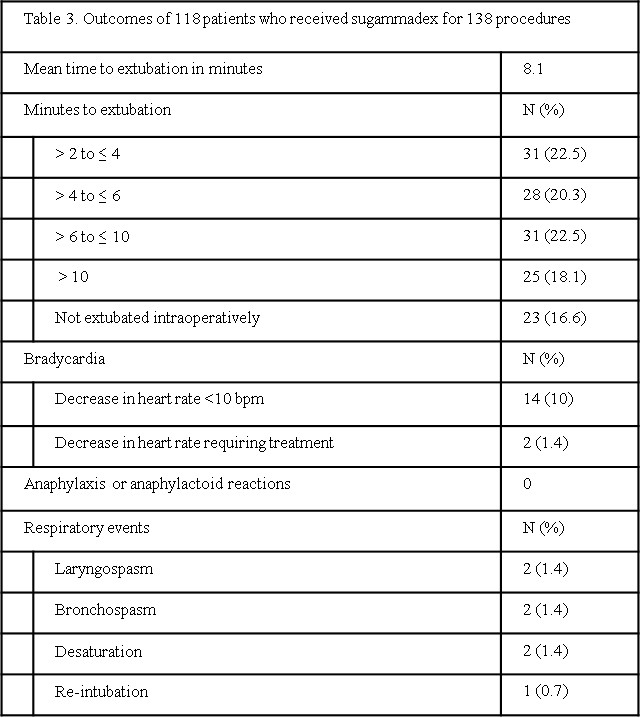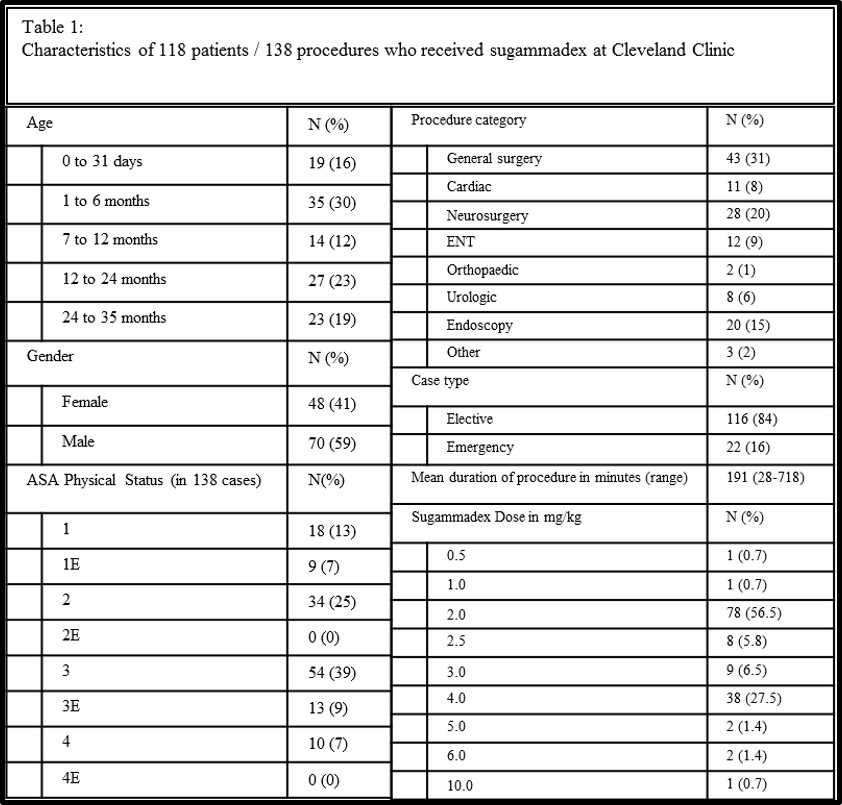CR2-183
Could sugammadex be an option in children younger than 3 years old? A case series summarizing our experience at Cleveland Clinic
Fawley N, Ahuja S, Castro P
Cleveland Clinic Foundation, Cleveland, OH, United states
INTRODUCTION:
Sugammadex is indicated for reversal of neuromuscular blockade (NMB) in adult anesthesia. In comparison to NMB reversal via acetylcholinesterase (AChE) inhibition, sugammadex offers potential advantages including full and rapid reversal, a lower incidence of residual NMB, and absence of cholinergic side effects. These benefits may extend to the pediatric population. However, there is limited experience regarding the safety and efficacy of sugammadex in pediatric patients, particularly below age 2. The aim of this study is to describe our experience with the use of sugammadex in pediatric patients younger than 3 years of age.
METHODS:
We conducted a retrospective review of medical records of patients under three years of age who received sugammadex (Bridion; Merck & Co 12/2015) for NMB reversal from 9/2016 to 9/2017 at the Cleveland Clinic. The primary evaluation was time from sugammadex dose to extubation. We also report adverse effects of sugammadex administration including anaphylaxis, heart rate variation, and respiratory events (desaturation, re-intubation, laryngospasm, bronchospasm). The Institutional Review Board approved the study.
RESULTS:
Clinical characteristics and outcomes of 118 patients who received 138 doses of sugammadex during individual surgeries are summarized in Tables 1 and 2. The mean time to extubation was 8.1 minutes. Three cases required sugammadex to be re-dosed due to inadequate reversal at doses of 1-2 mg/kg. Decrease in heart rate >10 bpm occurred in 10% of cases, but only 2 (1.4%) required pharmacologic treatment. Respiratory events occurred in six cases (4.3%) but only 1 was re-intubated.
DISCUSSION:
The use of sugammadex for NMB reversal in pediatric patients in the United States has been “off-labelâ€. Other studies have shown reduced time to return of train-of-four ratio, reduced time to extubation, and an acceptable safety profile in patients age 2 to 17 who received sugammadex versus AChE inhibitors (1,2). In patients under age 2, evidence is limited to case reports and retrospective studies comprising 50 infants (3). Our observations in 118 cases of children younger than 3 (including 95 younger than 2) who received sugammadex suggest a short time to extubation with limited adverse outcomes. Future studies are necessary to further characterize the efficacy and safety profile of sugammadex in this population.
REFERENCES:
1. Won JY, et al. Medicine. 2016;95:34(e4678).
2. Liu G, et al. Scientific Reports. 2017;7:5724.
3. Ozmete O, et al. J Clin Anesth. 2016;35:497-501.
Top













